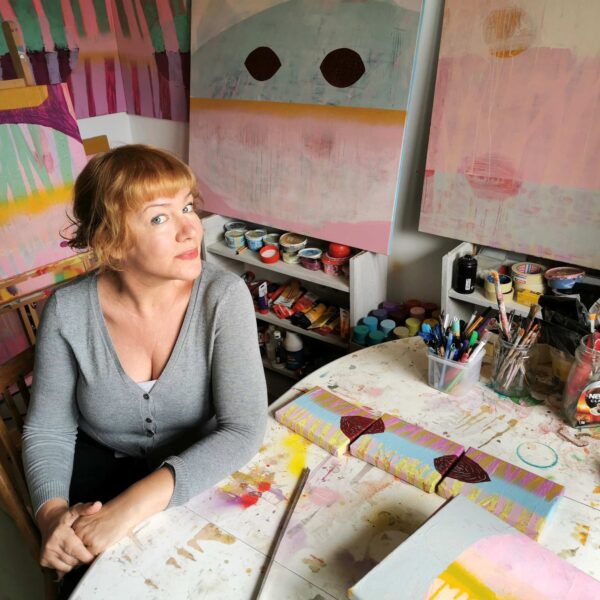I am interested in depicting the feeling of not seeing, of not seeing clearly – I had to realise over time that this is nothing more than an attempt to understand our own limitations – since the language of visuality is the one in which I feel most at home.
Although I have been disturbed since childhood by being imprisoned in my own body and unable to see, for example, what the spider in the corner sees, or by my failing eyesight, which means I am tied to an aid to avoid getting lost in the gloom, I really began to get occupied with the problem of representing this feeling when, as an adult, I painted a portrait of a childhood doll. I was not satisfied with the picture, even though I had painted exactly the same face I had seen when I was 2 or 3 years old, when the view was still clear and untouched. But I could no longer see it as I wished I could. Because of the passage of time, it was no longer possible; my own personality stood between us.
Later, I had the same feeling one day in November, when I was walking with my dog on the banks of the Danube. The fog was so thick that we had to walk very close to the river to see where the water began, but the far bank was nowhere to be seen. I was so impressed by this invisible river and its other side (which in itself has countless connotations) that I began to paint what I could not see there. The other bank, reflected on the surface of the water.
For me, not seeing is an ambivalent feeling, soothing yet exciting, like when I blew my face into a balloon as a child; a dazzling, colourful, blurry yet suffocating bubble. These colourful animal heads that creep into the foreground of my pictures, hiding faces, figures, landscapes or even themselves, these are barriers that we wish we could ignore, but perhaps once we get to know them, they are not so unbearable. This is how I use colour in paintings, or the delicacy of tracing paper in drawings: to domesticate sight.
A nem látás, a nem tisztán látás érzésének ábrázolása foglalkoztat – idővel rá kellett jönnöm, hogy nem más ez, mint saját korlátaink megismerésére való kísérlet – hiszen a vizualitás nyelve az, amiben a legotthonasabban érzem magam.
Ugyan már gyerekkoromtól zavart, hogy a saját testem foglya vagyok, és nem láthatom, pl., hogy mit lát a pók a sarokban, vagy egyre gyengülő látásom miatt egy segédeszközhöz vagyok kötve, hogy ne vesszek el a homályban; mégis igazán akkor kezdett el foglalkoztatni a fent említett érzés ábrázolásának problematikája, amikor – már felnőttként – lefestettem egy gyerekkori babám portréját. Nem voltam elégedett az képpel, pedig pontosan azt az arcot festettem meg, amit 2-3 évesen láttam, akkor, amikor még tiszta, érintetlen volt a látvány. De nem láthattam már úgy, bármennyire vágytam rá. Az eltelt idő miatt már nem lehetett az; a saját személyiségem állt kettőnk közé.
Később ugyanezzel az érzéssel találkoztam egy novemberi napon, amikor a kutyámmal a dunaparton jártam. Annyira sűrű volt a köd, hogy egészen közel kellett menni a folyóhoz, hogy láthassuk, hol kezdődik a víz, de a túlpart sehol sem látszott. Akkora hatással volt rám ez a láthatatlan folyó és a túlpartja, (ami már önmagában számtlan jelentést hordoz), hogy elkezdtem festeni azt, amit ott nem láthattam. A túlpartot, ahogy tükröződik a víz felszínén.
Számomra a nem látás egy ambivalens érzés, megnyugtató, mégis izgalmas, mint mikor gyerekként lufiba fúrtam az arcom; kápráztató, színes, homályos és egyben fullasztó burok. Ezek a színes állatfejek, amik beúsznak a képeim előterébe, bújtatva arcot, alakokat, tájat vagy akár saját magukat, ezek a korlátok, amikre legszívesebben rá sem néznénk, de talán, ha megismerhetjük őket, már nem annyira elviselhetetlenek. Erre használom a színeket a festményeknél, vagy a pauszpapír finomságát a rajzoknál: a látvány megszelídítésére.
